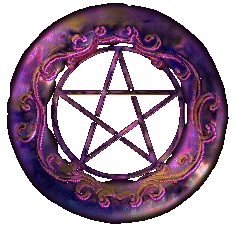

|
Pagans Lounge on MySpace.com  View My Guestbook Sign My Guestbook Main Page Introduction to Astrology Chapter 1 Chapter 2 Chapter 3 Chapter 4 Chapter 5 Chapter 6 Chapter 7 Chapter 8 Appendix Links About Ethereal Projections Advertisements Copyright Submit Info Contact Us |
Introduction to Astrology
Astrology can be considered the world's oldest celestial science. Since the earliest times, watching the sky has been a part of man's life. The seasonal changes were marked by the longest and shortest days (the solstices), and by the times when night and day were the same length (equinoxes), this became a simple calendar for hunting and planting. Besides these practical routine cycles, the position or state of the sun or moon was noted at the time of significant events. It was soon realized that certain phenomena in the skies coincided with certain events on earth. Eventually, these parallels were considered omens, and each tribe embellished them with their own myths to suit their view of the world. Gradually, the heavens became replete with fables which told about gods, demons, and heroes that formed a complex hierarchy of celestial beings who watched, judged, and manipulated the lives of men. As civilizations evolved and the body of knowledge grew, the earliest astrologers kept meticulous calendars and more complete records of celestial movements. The most convenient way to study the stars was by connecting their groupings into recognizable patterns we now call the constellations. The sky was thus divided into twelve segments each one represented by its own constellation. It was also noted that the visible planets often appeared to wander through they sky against this backdrop of constellations. These planets eventually acquired personalities and mythologies of their own, and astrologers soon began to affix significance to the position of these planets against certain constellations in the sky. The night sky was a grand soap-opera, where gods and goddesses played out their dramas, and the consequences were manifested on earth through droughts, floods, and a host of natural occurrences. Through the centuries, Astrology has dealt with the charting and interpretation of the cycles and movements of celestial objects. Through the use of computers, calculations that once took months for mathematicians to perform by hand can now be done in seconds, and the positions of planets can be computed to a hundredth of a degree. The interpretation part is another matter, relying vastly on centuries of richly embroidered legend and mythology. Astrology deals with ten planets. Eight of these are the sister planets of the earth: Mercury, Venus, Mars, Jupiter, Saturn, Uranus, Neptune, and Pluto. The other two are the Sun and the Moon, neither of which is a planet. (A planet circles the Sun.) However, as seen from the earth, the Sun and Moon follow the same path as the planets. Astrologers, interested in the relationships between the positions of all ten objects, simply call them the Ten Planets, and that's what we will call them. The path followed by the ten planets is called the ecliptic. You can visualize the ecliptic by imagining yourself looking out from a glass-enclosed observation tower located at the center of a giant circular racetrack. The tower represents the earth. The racetrack represents the ecliptic. As you look out from your tower, you see all ten planets moving around the track in the same direction, from the right to your left. Since the planets move at different speeds, they are all spread out around the track. Faster planets circle the track several times a year, overtaking and passing slower moving planets that take centuries to make one lap. Astrologers are interested in where each planet can be found on the track, and where they are with respect to each other. They use the signs of the zodiac to describe planet positions, and Aspects to describe the relations between them. |
